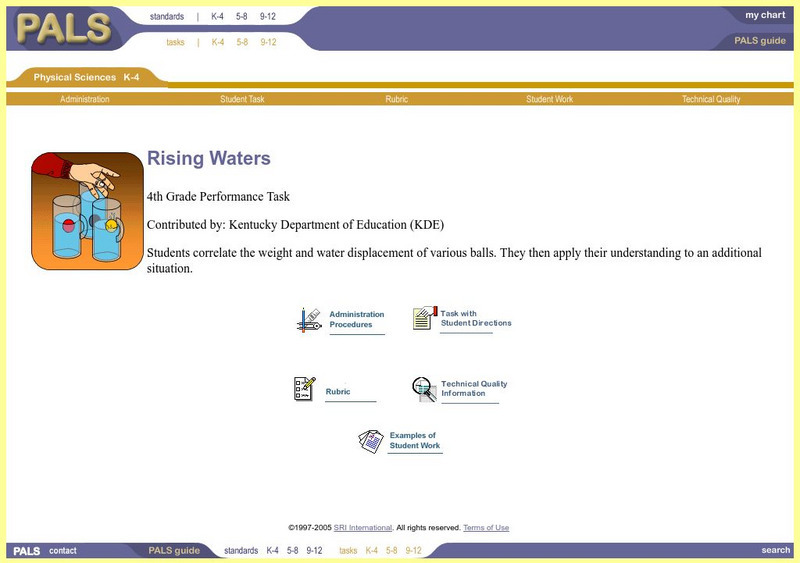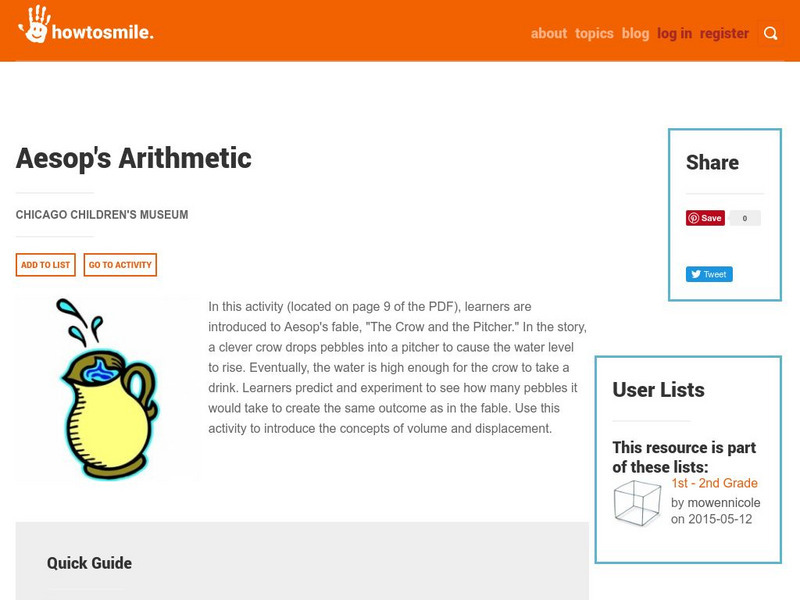Curated OER
Archimedes' Principle
Students examine the relationship between density and buoyancy. In this physics lesson students use Archimedes' Principle to complete calculations on buoyancy and a lab activity.
Curated OER
Buoyancy
In this buoyancy worksheet, students read about why objects float or sink. Students apply the Archimedes' Principle in a buoyancy lab. Students complete 1 graphic organizer.
Curated OER
Buoyancy-Why Things Float
In this buoyancy worksheet, students read about the principles behind objects floating including density, buoyancy and Archimedes' Principle. Students complete a buoyancy lab where they use a balloon and water and a film canister and...
Curated OER
I've Got That Sinking Feeling
Learners design a simple boat and predict how much weight it can carry. They should also discover why objects float or sink and how this can be determined experimentally. A great instructional activity on buoyancy!
TeachEngineering
Teach Engineering: The Physics of Fluid Mechanics
Five lessons about the study of fluid mechanics. The unit concludes with students applying what they have learned to determine the stability of individual above-ground storage tanks given specific storm conditions so they can analyze...
SRI International
Performance Assessment Links in Science: Rising Waters
A unique approach to determining size and weight of an object through water displacement: students are presented with a scenario along with a variety of balls made of different materials and pitchers of water. Working in small groups,...
Other
National Science Digital Library: Smile: Aesop's Arithmetic
A cross-curricular lesson plan integrating Aesop's The Crow and the Pitcher with an experiment testing the outcome of the fable using volume and displacement concepts.
Concord Consortium
The Concord Consortium: Molecular Workbench: Archimedes' Buoyancy Principle
Adjust the ratio of the masses of different particles to see how buoyancy is affected.
Annenberg Foundation
Annenberg Learner: 5 Question Survey: Rising and Sinking
Find out your or your students' understanding of fluid displacement. Afterwards you can see how others answered the questions.
Science Struck
Science Struck: Piston Pump vs. Diaphragm Pump
Learn the difference between a piston pump and a diaphragm pump, both of which are positive displacement pumps. Includes chart listing characteristics for each, their different types, and their advantages and disadvantages.









